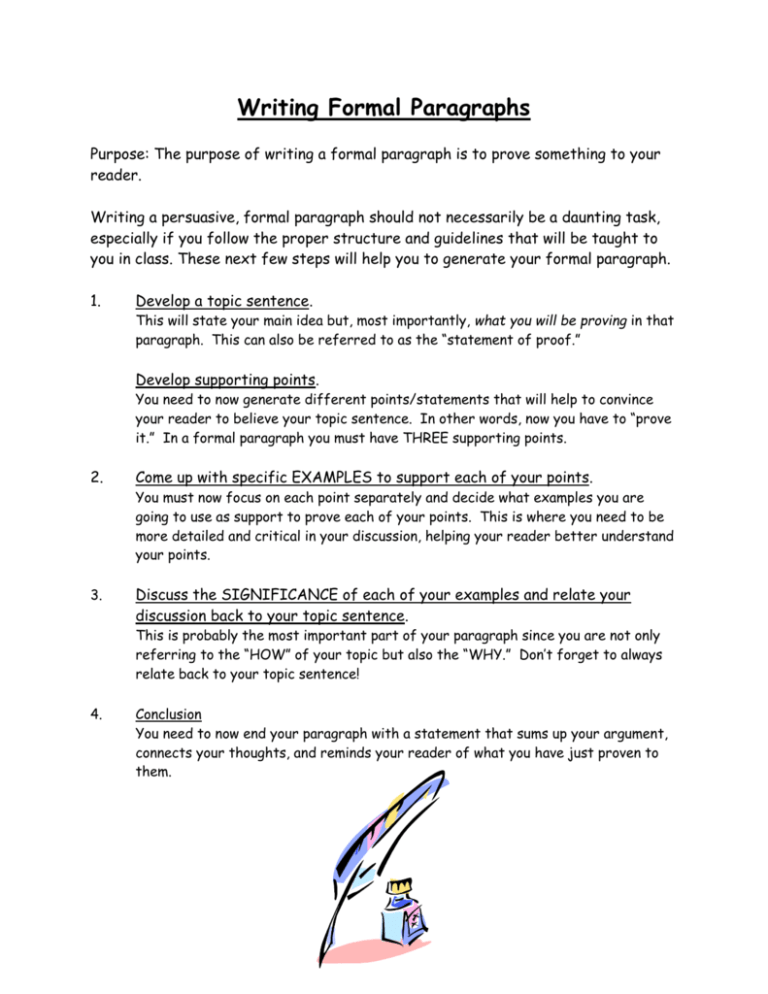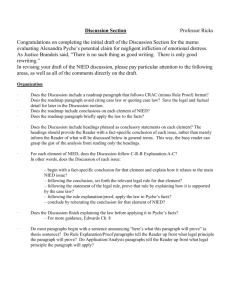Grade 8 Formal Paragraphs / Microsoft Word 97-2003
advertisement

Writing Formal Paragraphs Purpose: The purpose of writing a formal paragraph is to prove something to your reader. Writing a persuasive, formal paragraph should not necessarily be a daunting task, especially if you follow the proper structure and guidelines that will be taught to you in class. These next few steps will help you to generate your formal paragraph. 1. Develop a topic sentence. This will state your main idea but, most importantly, what you will be proving in that paragraph. This can also be referred to as the “statement of proof.” Develop supporting points. You need to now generate different points/statements that will help to convince your reader to believe your topic sentence. In other words, now you have to “prove it.” In a formal paragraph you must have THREE supporting points. 2. Come up with specific EXAMPLES to support each of your points. 3. Discuss the SIGNIFICANCE of each of your examples and relate your discussion back to your topic sentence. You must now focus on each point separately and decide what examples you are going to use as support to prove each of your points. This is where you need to be more detailed and critical in your discussion, helping your reader better understand your points. This is probably the most important part of your paragraph since you are not only referring to the “HOW” of your topic but also the “WHY.” Don’t forget to always relate back to your topic sentence! 4. Conclusion You need to now end your paragraph with a statement that sums up your argument, connects your thoughts, and reminds your reader of what you have just proven to them. Things to remember when writing formal paragraphs: always write in complete, detailed sentences. be sure to indent the first line of your paragraph do not leave any spaces between your points.*** Also remember to EDIT Try replacing words that are repeated too many times. One way to make your writing more cohesive is to use linking words when you move from sentence to sentence. Do not use them too often or they too will become repetitive. Remember that your paragraph needs to flow – one “point-example-significance” needs to move smoothly into the next. Your statements and thoughts should never be abrupt and disjointed. Some examples of linking words and phrases are: also a second reason as a result furthermore nevertheless still consequently therefore as well as in addition otherwise yet for example after all for instance another meanwhile similarly yet besides however Name:______________________________________________Date:_______ Topic Sentence: be sure to make a specific point about something Point # 1: Proof #1: Comment #1: Point # 2: Proof #2: Comment #2: Point # 3: Proof #3: Comment #3: Conclusion: Rewrite the main idea but in a different way. A suggestion for how to do this is to reverse the order of the topic sentence








